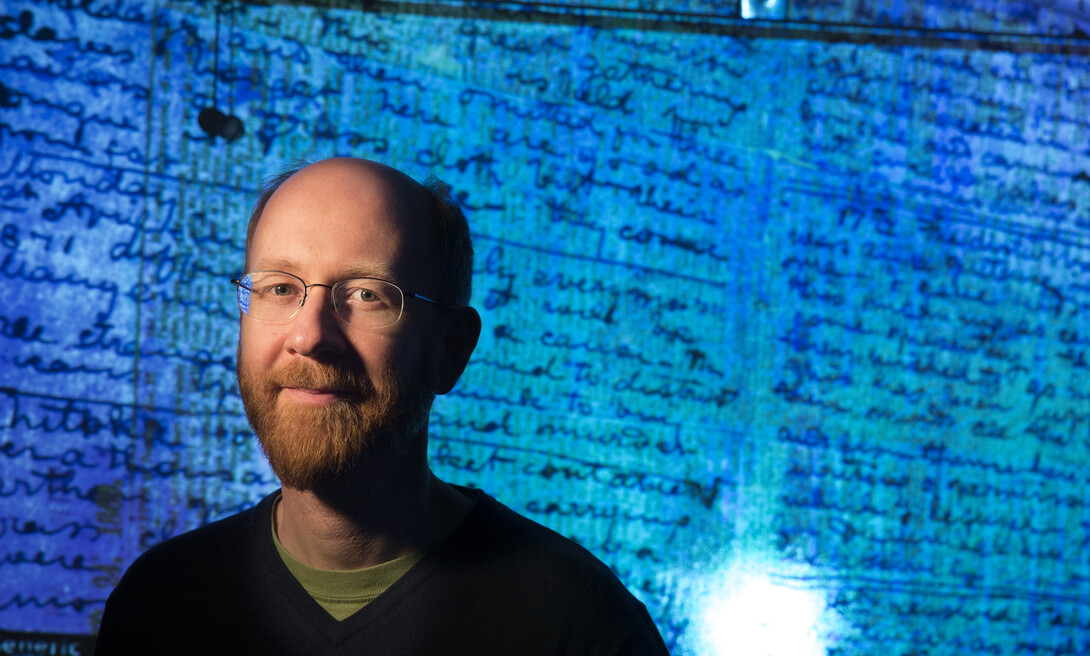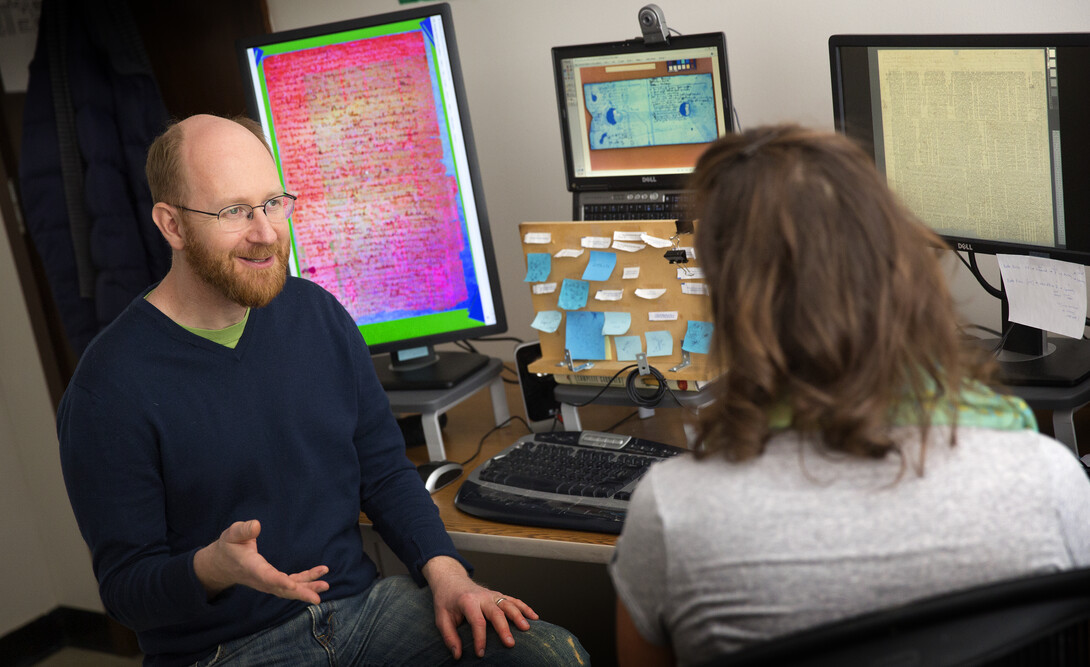
Using special lights, computer imaging and careful analysis, a UNL scholar and a team of scientists undid more than a century’s worth of damage and gave new life to a famous diary long thought lost to the elements of time.
The scholar, Adrian S. Wisnicki, and his team are now poised to take that work in new directions.
In 2009, Wisnicki was searching for information about Victorian explorers for his book and heard of a manuscript by David Livingstone, the famous 19th-century British explorer. The 1871 field diary was no longer legible; much of the handwriting was faded and written over the top of old newsprint and book pages.
But if transcribed, the diary could perhaps tell the whole story of how his famous meeting with Henry M. Stanley came to be – along with the greeting, “Dr. Livingstone, I presume?,” – which changed the tide of British settlements in Africa and led to the end of the Eastern African Slave Trade.
Through a process called spectral imaging, Wisnicki and a team of scientists, including Bill Christens-Barry of Equipoise Imaging and Roger Easton Jr. of the Rochester Institute of Technology, illuminated the words on the page, making them readable again. Spectral imaging is a process of photographing the manuscripts under wavelengths of varying light, starting with ultraviolet, moving through the visible color spectrum, and ending with infrared. The images are then processed to produce enhanced and legible manuscripts.
The diary manuscript and Wisnicki’s analysis were published in 2011, providing new insights into Livingstone and how his actions affected Africa as we know it. Livingstone witnessed an atrocity – the massacre of more than 400 people by slave traders – and his reports back to Great Britain sent shockwaves through the country and the East African slave trade was ultimately ended.
Through Livingstone’s account in his diary, Wisnicki learned that Livingstone’s followers may have played a much larger role in the massacre than previously thought. Subsequently he made additional discoveries, which were featured in “Secrets of the Dead,” a PBS program that aired March 26. The program is available online at http://video.pbs.org/video/2365208393/.
While producing the documentary, Wisnicki re-read much of the diary and through a new analysis found information that illuminates a previously unknown side of Livingstone.
“Re-reading the diary and thinking about it again, I discovered new details of what Livingstone did in the weeks leading up to the massacre and how the massacre fed into his actions,” he said. “It’s very different from past arguments we made. It casts Livingstone in a very different light. I would say these new revelations speak very much in Livingstone’s favor, but in a very unexpected way.”
Wisnicki, a faculty member at Indiana University of Pennsylvania while he worked on the 1871 field diary project, is now a fellow at UNL’s Center for Research in the Digital Humanities and assistant professor of English. Since arriving in Lincoln, he has begun work on two new, extensive digital research projects also focused on Livingstone.
Wisnicki had turned his attention to British explorers in Africa after combining two seemingly disparate research interests. He’d always been a scholar of Victorian literature, but after spending a year in Botswana, he wanted to find a way to study Africa as well.
“I asked myself how I could combine these two interests that look very different,” he said. “What I realized was that I could focus on 19th century Victorian travel in Africa because Victorians traveled and explored there often as they were establishing the empire.”
Through a grant from the National Endowment for the Humanities, Wisnicki and the same team of scientists that uncovered the spectral secrets of the 1871 diary are now starting work on a Livingstone field diary from 1870.
“The 1870 field diary was written in a similar manner as the 1871 field diary,” Wisnicki said. “But the 1870 diary is also a more complex document. As a result, working on this diary will allow us to take spectral image processing in innovative new directions.
“As before, all of our results will be released to the public for further study and analysis. Livingstone is a writer who never grows old, whose works continue to generate international interest. ”
Because Livingstone thoroughly chronicled his extensive journeys, his journals and letters are a valuable resource for 19th century African history in a number of areas.
“There’s geological data, cultural data, geographical data, astronomical data, zoological data – there’s all kinds of information there in these diaries, that when used in different ways, can tell us different things about the present, such as the erosion of waterways in Africa and even global climate change,” Wisnicki said.
Wisnicki also is leading an update of the digital home for Livingstone’s manuscripts Livingstone Online (livingstoneonline.org) by 2015. By the end of the three-year, NEH-funded project, more than 3,000 new manuscript images will be added from the National Library of Scotland and the David Livingstone Center in Glasgow to the site. The UCLA Digital Library will continue to host Livingstone Online, which will allow easy integration of data from future projects.
“We’re developing it in a way that will balance the needs of academics with those of the general public,” he said. “Our work continues to attract a global audience, and we hope to use future phases of the project to expand the international collaboration that is a hallmark of our research.”
Wisnicki’s future projects may include the application of 3D spectral imaging to study some of the cultural objects that Livingstone collected during his travels and collaboration with archives in South Africa and Zambia.








